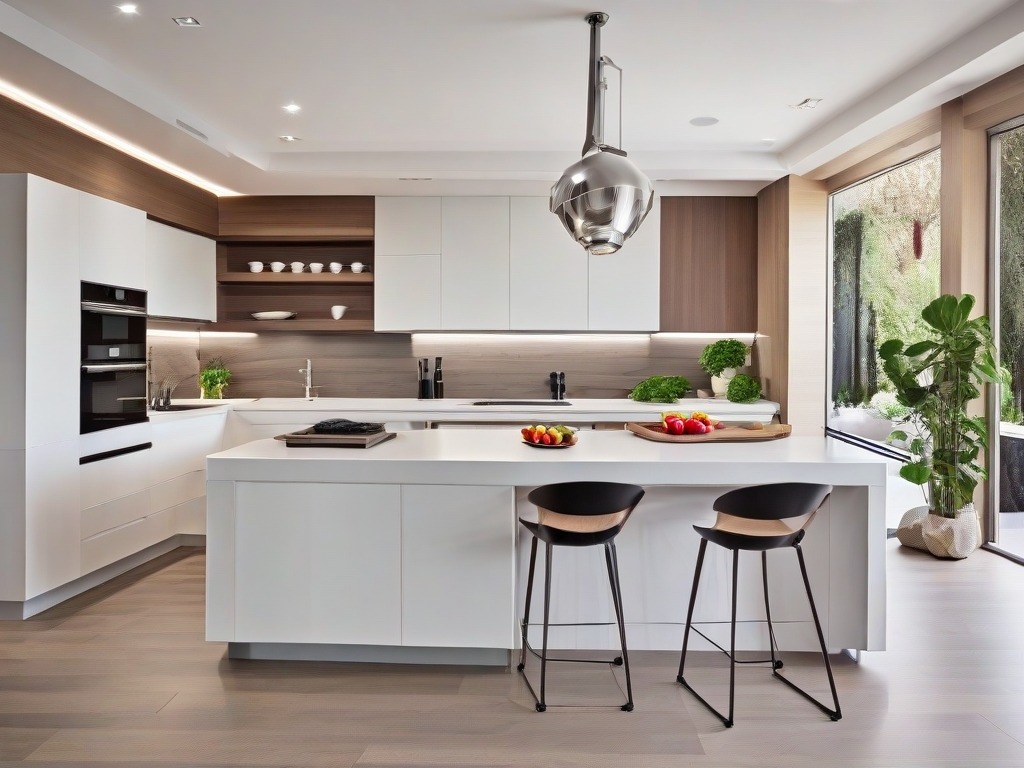
In recent years, the Open concept kitchen designs has surged in popularity, becoming a cornerstone of modern home design. Once relegated to the realm of trendy spaces or expansive estates, this layout has carved its way into homes across various styles and sizes.
By dismantling traditional barriers between cooking and living areas, homeowners can cultivate a sense of togetherness that’s increasingly sought after in today’s fast-paced lifestyle.
This transformation not only redefines your home’s aesthetic but also promotes interaction among family members and guests, ensuring that no one is left out while culinary delights emerge from the kitchen.
Embracing an open concept layout offers numerous benefits beyond mere style; it enhances natural light flow, amplifies social engagement, and maximizes space efficiency.
Picture hosting dinner parties where laughter echoes through unconfined spaces or enjoying mornings over coffee as sunlight floods in from strategically placed windows and glass doors—these are just some of the possibilities an open concept kitchen creates.
As you delve into our curated list of seven stunning ideas for transforming your kitchen into a breathtaking centerpiece of your home, prepare to discover how functionality melds seamlessly with innovative design. With practical tips and striking inspirations on every page, it’s time to turn your vision of an inviting and vibrant living space into reality. Let’s begin!
1. Emphasizing Natural Light for Open concept kitchen designs
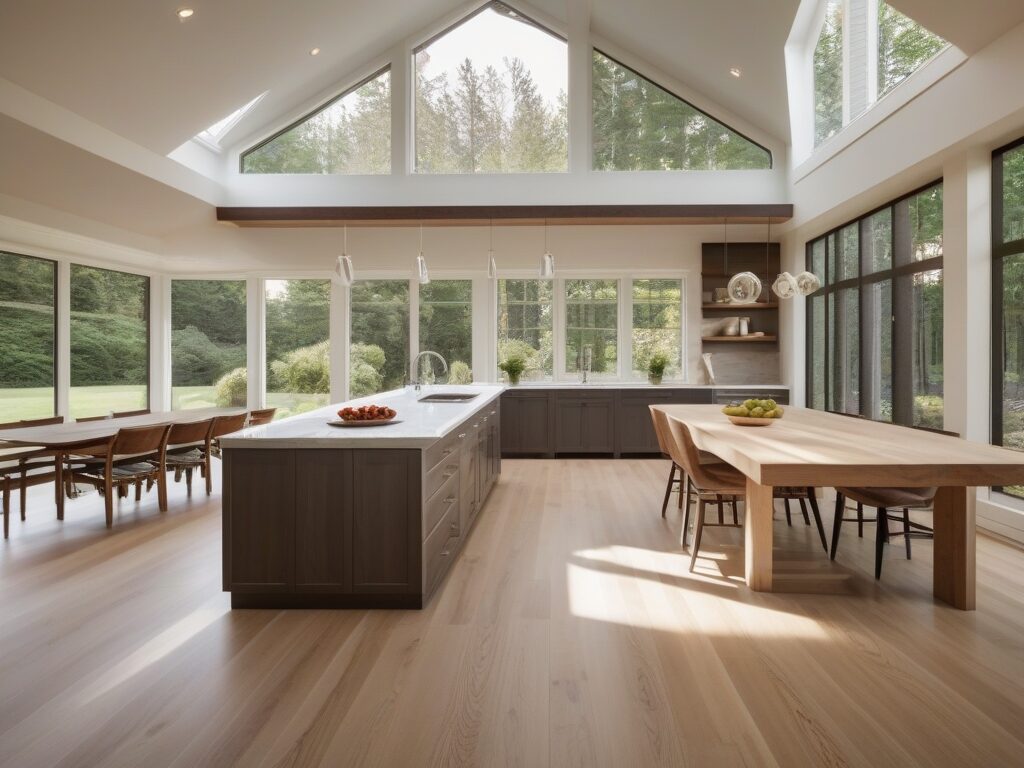
One of the most transformative elements of an open concept kitchen is the incorporation of natural light. Large windows and glass doors not only enhance brightness but also create a seamless connection between indoor and outdoor spaces.
Imagine a kitchen with floor-to-ceiling windows that frame a picturesque garden view, instantly lifting your mood each time you enter the space. Install sliding glass doors that lead out onto a deck or patio; this not only invites in more daylight but encourages a sense of openness, allowing your living area to flow effortlessly into nature.
To further optimize illumination, consider incorporating skylights or light wells that invite sunshine from above. Strategically placing skylights over key areas such as cooking spaces and dining tables can provide essential tasks with additional light while adding an architectural feature that elevates the design aesthetic.
For example, a centrally located skylight in your open kitchen could become a visual focal point, diffusing light beautifully throughout the day. Moreover, rooms filled with natural light are proven to bolster well-being by boosting mood and energy levels.
When selecting cabinetry and wall colors, aim for lighter shades that reflect sunlight effectively. Soft whites, pale grays, or muted pastels can help amplify the natural light pouring into your space while creating an airy ambiance.
For instance, bright white shaker cabinets paired with warm oak flooring create an inviting contrast while making the room feel larger than it is—a perfect complement to any open concept layout. Ultimately, emphasizing natural light in your kitchen will not only enhance its visual appeal but also foster an inviting atmosphere where friends and family can gather seamlessly.
2. Seamless Flow Between Spaces
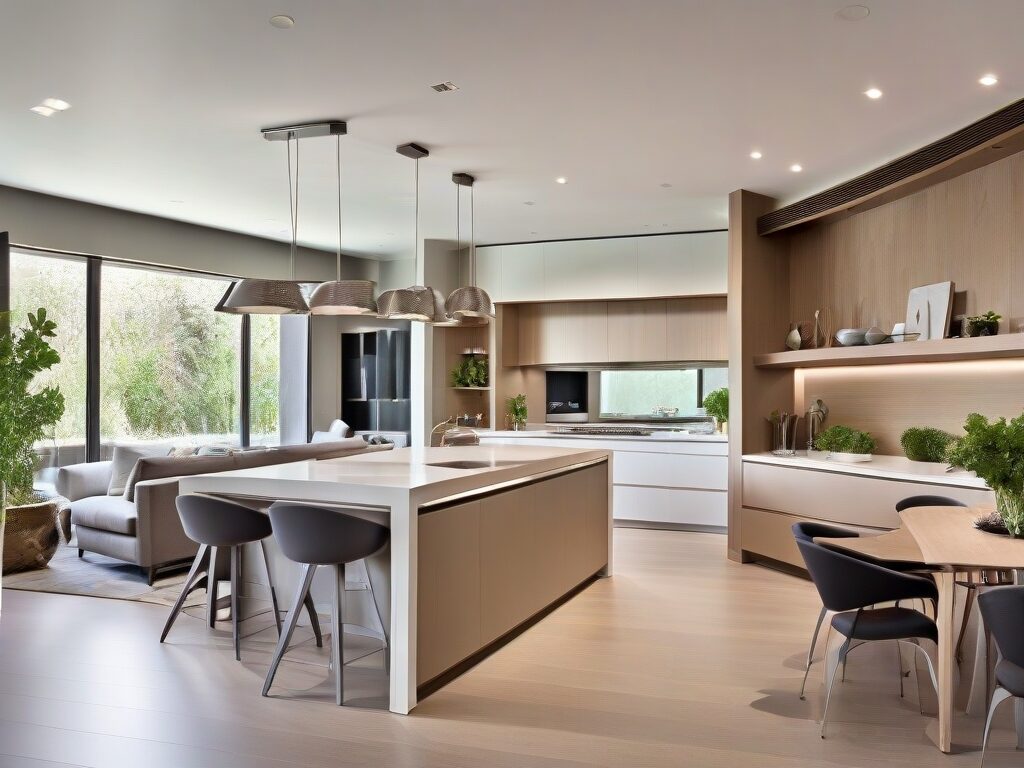
Creating a seamless flow between your open concept kitchen and adjacent living areas is essential for promoting interaction and enhancing the overall functionality of your home. One effective way to achieve this cohesive look is by using matching materials across both spaces.
For instance, if you choose a stunning hardwood floor in the kitchen, continuing that same flooring into the dining and living rooms creates visual continuity while making the entire area feel expansive. Similarly, harmonizing color palettes – such as opting for soft neutrals or a monochromatic scheme – ties together various distinct zones and emphasizes openness.
Furniture arrangement plays a critical role in facilitating interaction between your kitchen and other areas of your living space. To encourage conversation and socialization, consider placing seating arrangements—like bar stools at an island or chairs around a central coffee table—in close proximity to cooking spaces.
For example, an L-shaped sectional can be strategically positioned near the kitchen with a clear line of sight to ensure that whether you’re cooking dinner or entertaining guests, no one feels isolated. Additionally, ensuring adequate spacing allows for movement without obstruction keeps the energy flowing naturally throughout these interconnected areas.
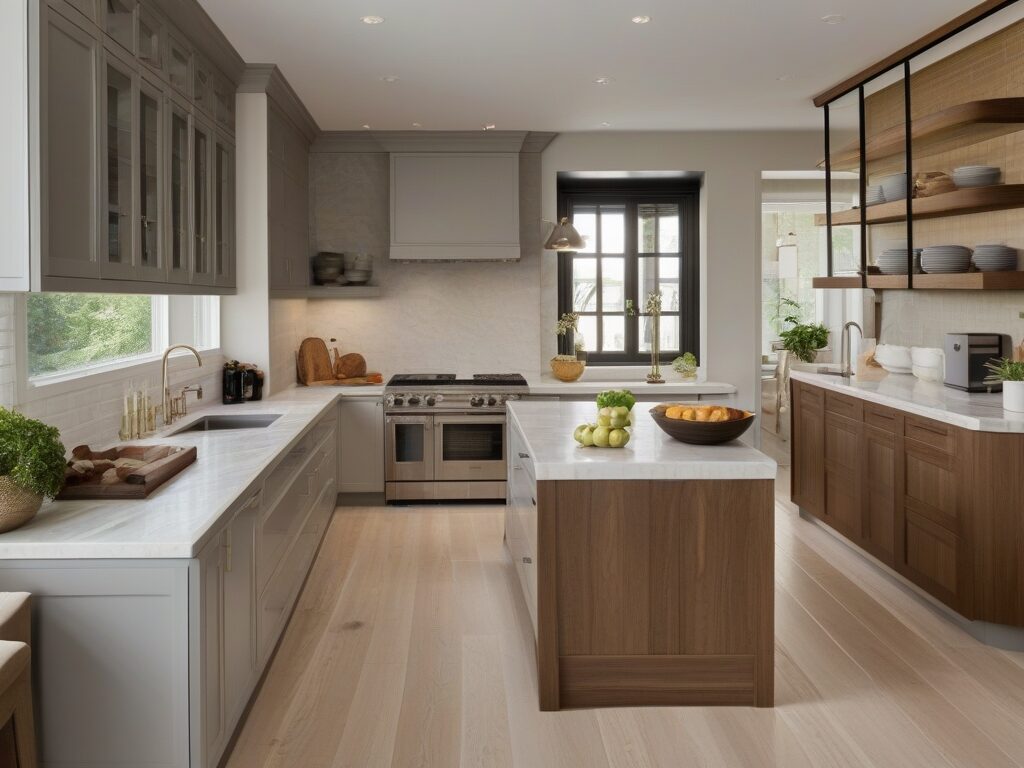
Designing purposeful sight lines further enhances the perception of openness in your home’s layout. By strategically placing windows that frame delightful views or ensuring unobstructed lines from one area to another, you allow light and visual aesthetics to work in harmony.
Large openings like bay windows can offer picturesque outside views while simultaneously enhancing interior brightness and decoration. Incorporating elements such as glass partitions instead of solid walls offers elegance but maintains transparency—a smart design choice if privacy isn’t paramount yet keeping separation between spaces is desired.
Ultimately, achieving an effortless transition within your open concept layout encourages family engagement, functional movement through shared spaces, and elevates aesthetic appeal—all vital components that enrich daily life within your home!
So whether it’s through material choices on floors and cabinets or insightful furniture designs that bring people together, striving for seamless flows will undoubtedly foster harmony between comfort and style within your dazzling abode.
3. Functional Layouts for Maximum Efficiency
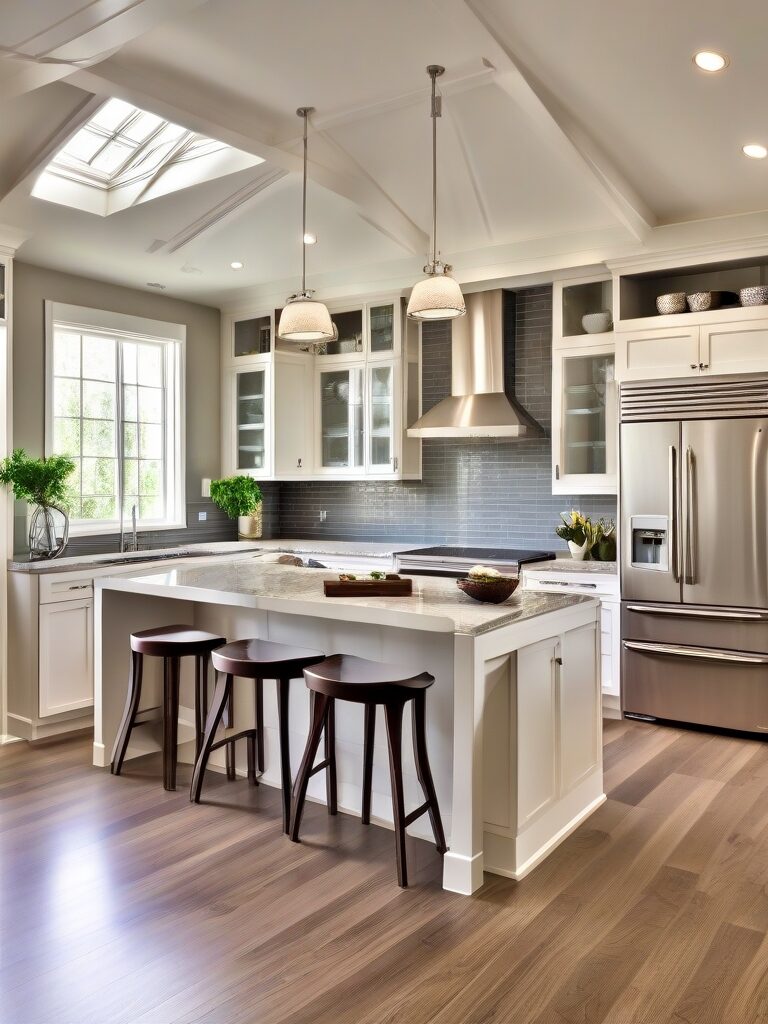
Designing an open concept kitchen revolves around the principles of efficiency, and a well-planned layout is crucial to achieving this goal.
One foundational concept in kitchen design is the “work triangle,” which represents the optimal distance and relationship between the three primary work areas: the sink, stove, and refrigerator. In an open concept setting, defining this triangle becomes even more critical as these spaces seamlessly connect with living areas.
Homeowners can enhance ergonomic flow by arranging these key zones within a close proximity while keeping pathways clear for foot traffic—a simple but effective strategy that allows for ease of movement when prepping meals or entertaining guests.
Integrating multi-functional islands emerges as a powerful solution to maximize both workspace and storage. A versatile island can serve multiple purposes, functioning as a food prep station, dining area, or even as a family hangout space where friends can gather while cooking takes place nearby.
For instance, incorporating built-in cabinets or drawers in your island design can provide extra room to stow away utensils, pots, and pans—all while maintaining an airy aesthetic that aligns with open concept ideals.
Additionally, consider using varying countertop heights on your island; this not only adds visual interest but also allows different activities to take place simultaneously without interfering with one another.
Moreover, strategic appliance placement plays a pivotal role in optimizing workflow within the open concept kitchen framework. Instead of relegating appliances to corners or isolation points that require backtracking during meal preparation, aim for thoughtful configurations that streamline tasks.
For example, positioning the dishwasher next to the sink minimizes water spillage during dish clean-up while fostering efficient loading processes without disrupting cooking movements nearby. Choosing sleek designs that meld into cabinetry can further create an uncluttered look—keeping surfaces streamlined while ensuring everything remains at arm’s reach.
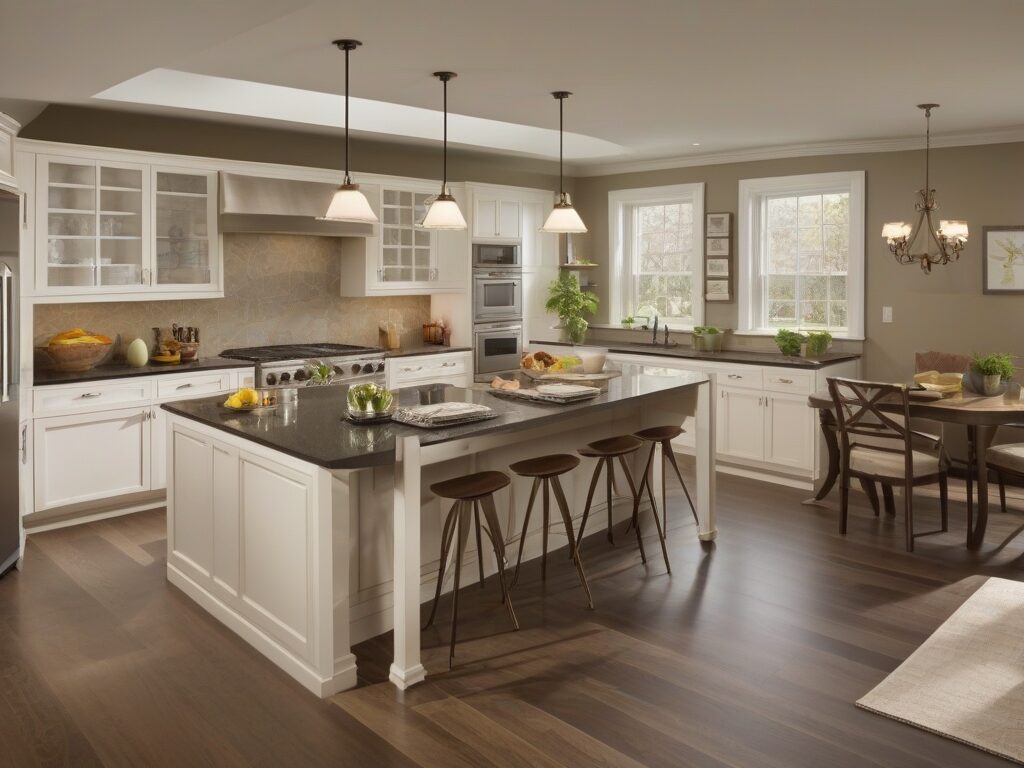
By carefully analyzing work triangles, embracing multifunctional elements like islands, and making smart choices about appliance placements, you set yourself up not just for navigational ease but also elevate your cooking experience overall.
As homeowners reimagine their kitchens through functionality-focused layouts within open concepts, they embark on creating inviting spaces where culinary creativity flourishes alongside family connections—truly elevating everyday life through exceptional design.
4. Stylish Storage Solutions for Open concept kitchen designs
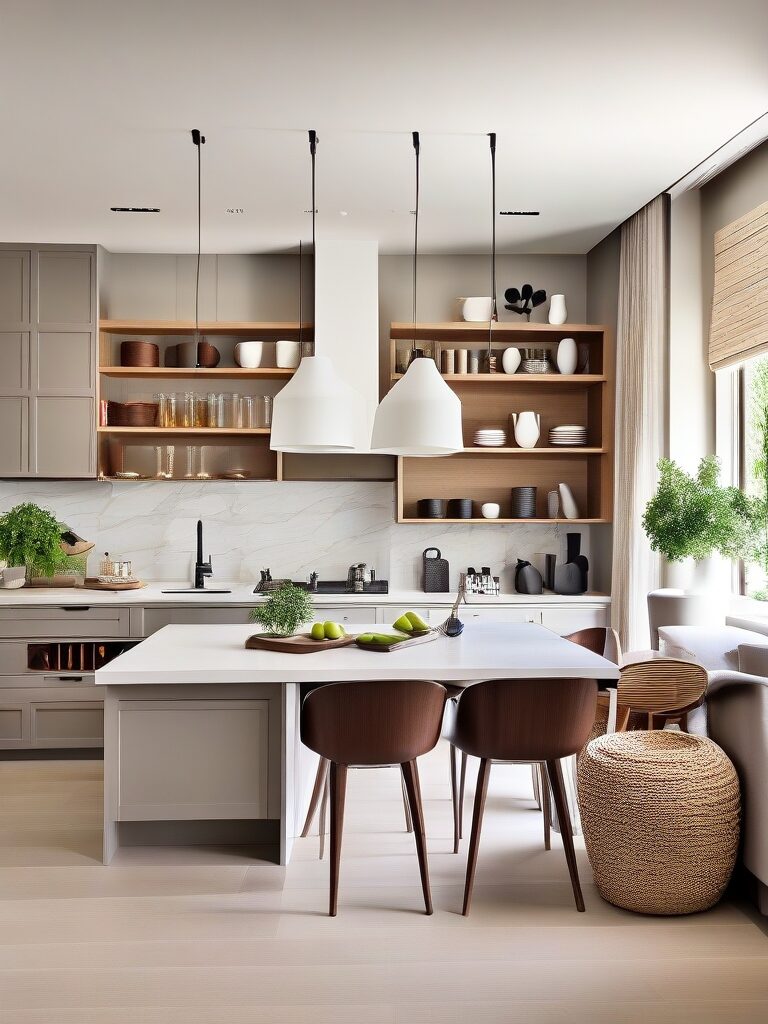
When designing an open concept kitchen, stylish storage solutions are paramount to creating a space that is both functional and aesthetically pleasing.
Innovative cabinet designs play a crucial role in maintaining this balance — skilled craftsmen now offer sleek cabinetry that maximizes vertical space and minimizes visual clutter.
For example, consider using tall cabinets that extend up to the ceiling or even custom units with pull-out features. This not only provides ample storage but also gives the illusion of a more expansive room by drawing the eye upwards.
Open shelving has also gained popularity as a versatile option for storing and displaying items within open concept kitchens.
By opting for carefully curated open shelves, homeowners can showcase decorative dishware, cookbooks, or even succulents, adding personality and warmth to the space.
It’s essential, however, to maintain some level of organization; too many items can quickly lead to visual chaos. A well-arranged shelf with select pieces can serve as an attractive focal point while enhancing the room’s overall charm.
Built-in solutions, such as pantry cabinets or corner storage systems, are other excellent techniques for achieving convenience and organization without sacrificing style. A pull-out pantry tucked seamlessly into cabinetry can provide easy access to cooking essentials while keeping them out of sight when not in use.
Additionally, customized corner storage units can utilize often-overlooked spaces efficiently and transform them into practical assets rather than mere dead zones.
Ultimately, stylish storage solutions are about harmonizing functionality with personal style during your kitchen transformation journey.
By integrating innovative cabinets, showcasing favorite items through open shelving, and implementing clever built-ins, you create a visually appealing environment where everything has its place—resulting in an inviting atmosphere that’s not just beautiful but exceptionally user-friendly for everyday living.
5. Bold Design Elements Elevate Aesthetics
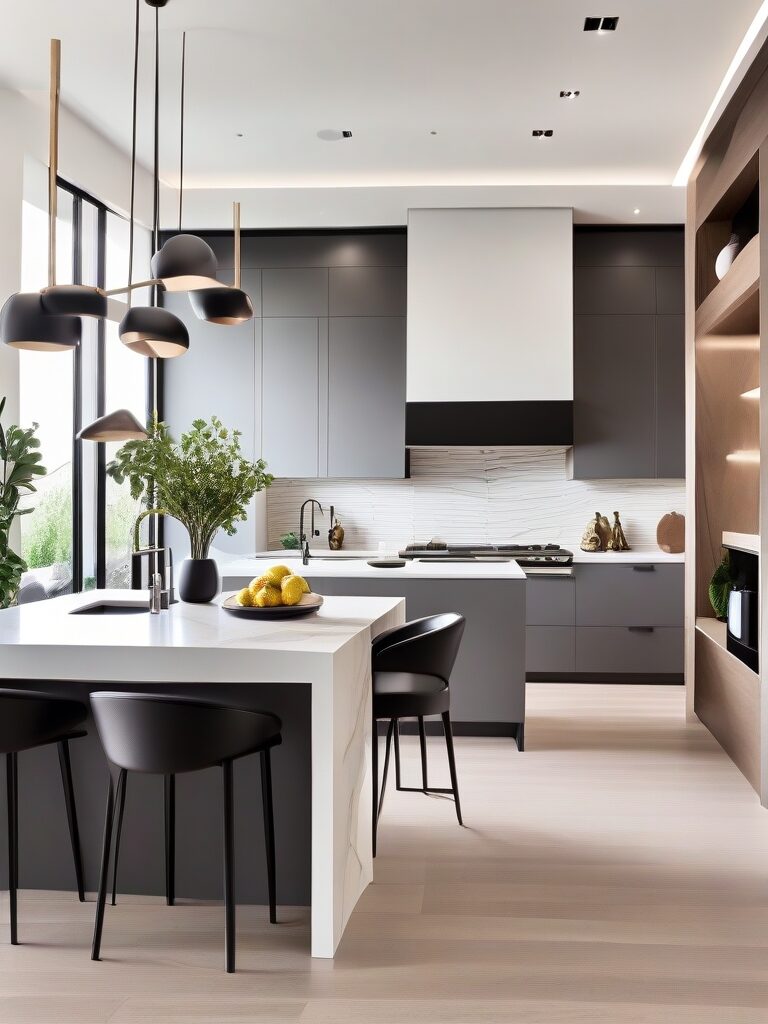
In the realm of open concept kitchens, bold design elements serve as the primary differentiators that define not just functionality, but a kitchen’s overall personality.
Color palettes play a crucial role in this narrative. Selecting striking hues like deep navy blue or vibrant emerald green can create an eye-catching focal point that elevates the entire space beyond mundane neutrality.
For instance, consider pairing these rich colors with white countertops to achieve a clean yet dramatic contrast.
Such selections invite creativity and let your personality shine through—whether you prefer understated elegance or vibrant flair.
Lighting fixtures are another way to make a significant impact in an open concept layout. Gone are the days of mere task lighting; today’s kitchens showcase statement pieces such as oversized pendant lights or artistic chandeliers that draw attention and spark conversation.
Imagine hanging an eclectic array of color-coordinated lanterns above a kitchen island—a design choice that adds warmth while also serving as an artful centerpiece. The right lighting doesn’t just illuminate your cooking area; it sets the mood for gatherings and elevates everyday culinary experiences into something special.
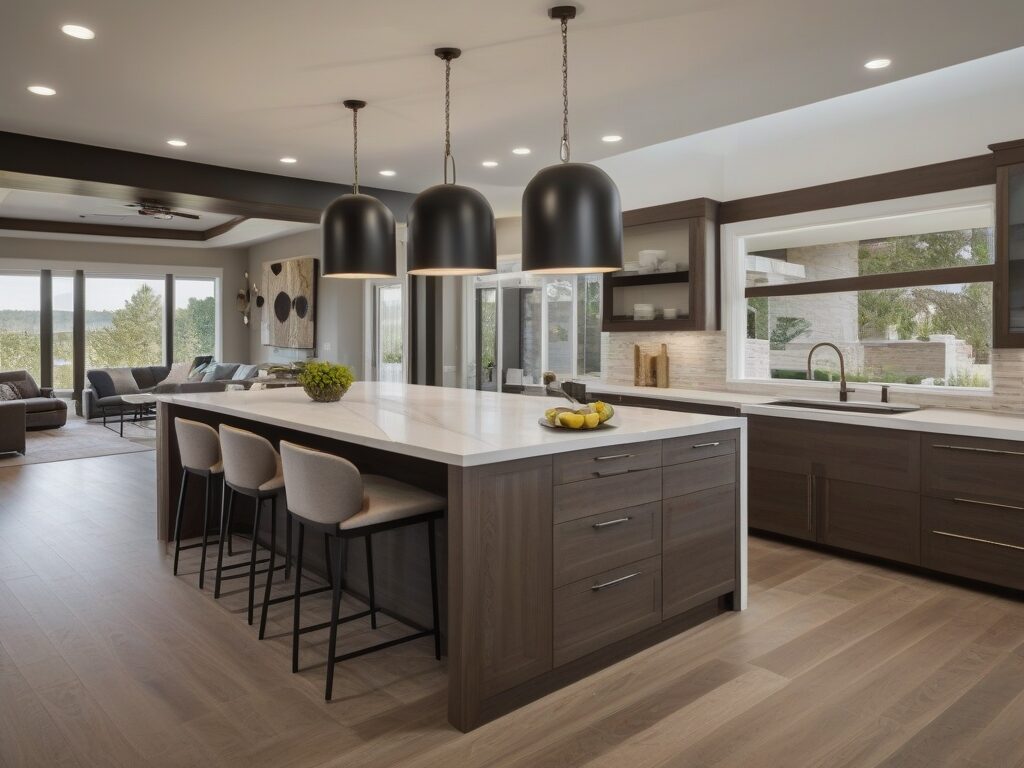
In addition to color and lighting, introducing unique backsplashes or countertops can significantly enhance visual interest in an open kitchen design. Consider using reclaimed wood for a rustic backsplash paired with sleek marble countertops for a juxtaposition of textures that tell a story of both tradition and modernity.
Alternatively, bold geometric tiles in varying patterns can lead the eye along splashes of color reminiscent of classic Italian kitchens, offering both charm and sophistication. These choices bridge function and aesthetics beautifully, turning practical surfaces into canvases that contribute magnificently to the room’s overall character.
Investing time in bold design elements ultimately ensures your open concept kitchen becomes more than just a functional space—it transforms into a true reflection of your style and lifestyle. Each carefully curated choice contributes layers of depth and intrigue while inviting friends and family to gather and enjoy life together within its warm embrace.
6. Outdoor Integration: Bringing Nature Indoors
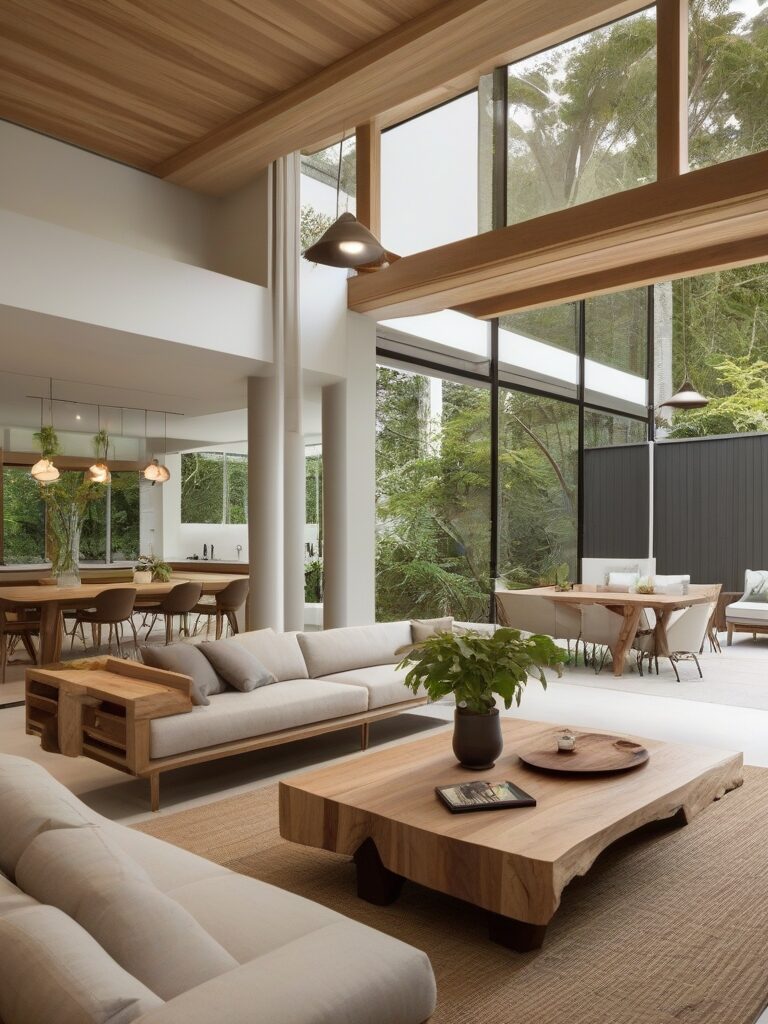
Integrating outdoor spaces with your kitchen not only enhances the overall aesthetic but also elevates the living experience by creating a natural flow between environments. One of the most effective methods to achieve this is through well-designed transition areas, such as patios or decks that seamlessly extend from the kitchen.
Imagine stepping out from your cooking space onto a sun-drenched deck, where fresh herbs and vegetables flourish in planters just outside your door—this connection fosters both convenience and an inviting atmosphere for entertaining guests.
To further blur the lines between indoor and outdoor living, bi-fold or sliding doors have become popular choices in contemporary open concept kitchens.
These expansive glass doors can be fully opened to create a seamless passageway that connects your kitchen to the backyard or patio.
This design encourages natural airflow during pleasant weather and provides breathtaking views that make cooking and dining more pleasurable. For instance, customers who have chosen this route often report feeling more engaged with their surroundings while preparing meals, transforming mundane tasks into enjoyable experiences.
In addition to these architectural features, landscape elements visible from inside your home significantly enhance its appeal. Thoughtfully placed gardens, water features like fountains, or even strategic lighting on exterior plantings create a tranquil backdrop that can inspire relaxation within your culinary space.
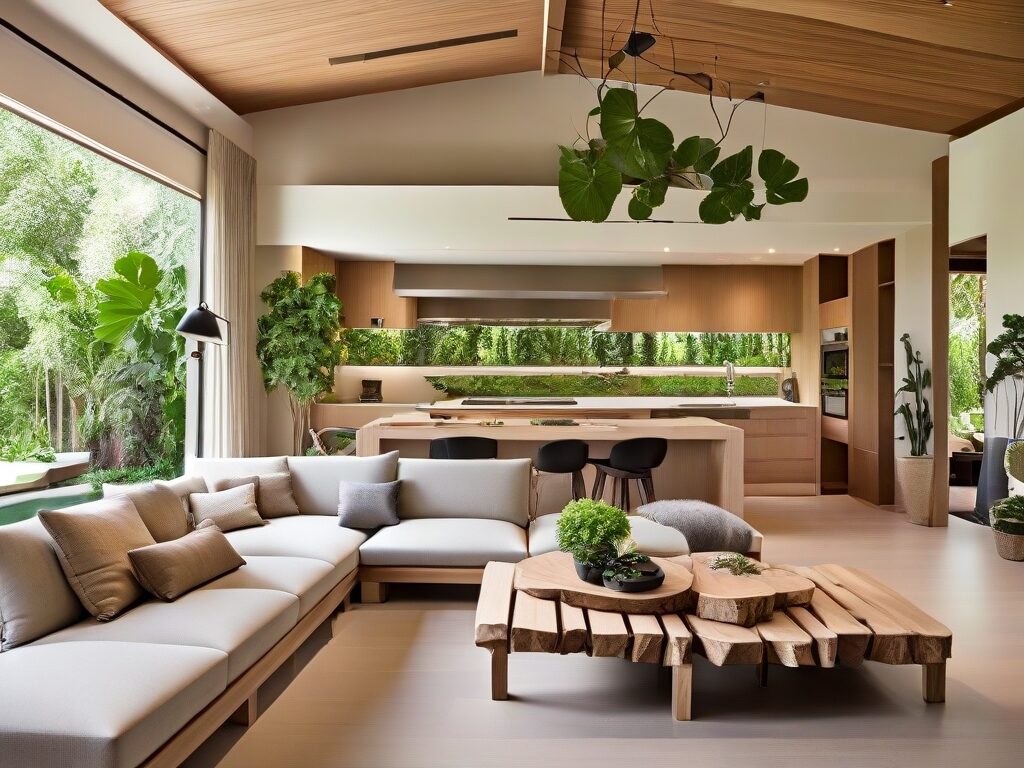
Whether it’s a vibrant flower bed blooming seasonally or evergreen shrubs providing year-round greenery, integrating these elements can elevate not just the view but also improve mental well-being—a serene environment yields a reduced stress level.
Ultimately, bringing nature indoors through outdoor integration transforms an ordinary kitchen into an extraordinary living space that celebrates both functionality and beauty.
By thoughtfully designing transitions between indoor environments and outdoor landscapes—with careful attention to architecture and landscaping—homeowners can enjoy enhanced lifestyle quality while embracing creativity in their home design journey.
7. Cultural Inspirations: Open Concept Kitchen Designs in India
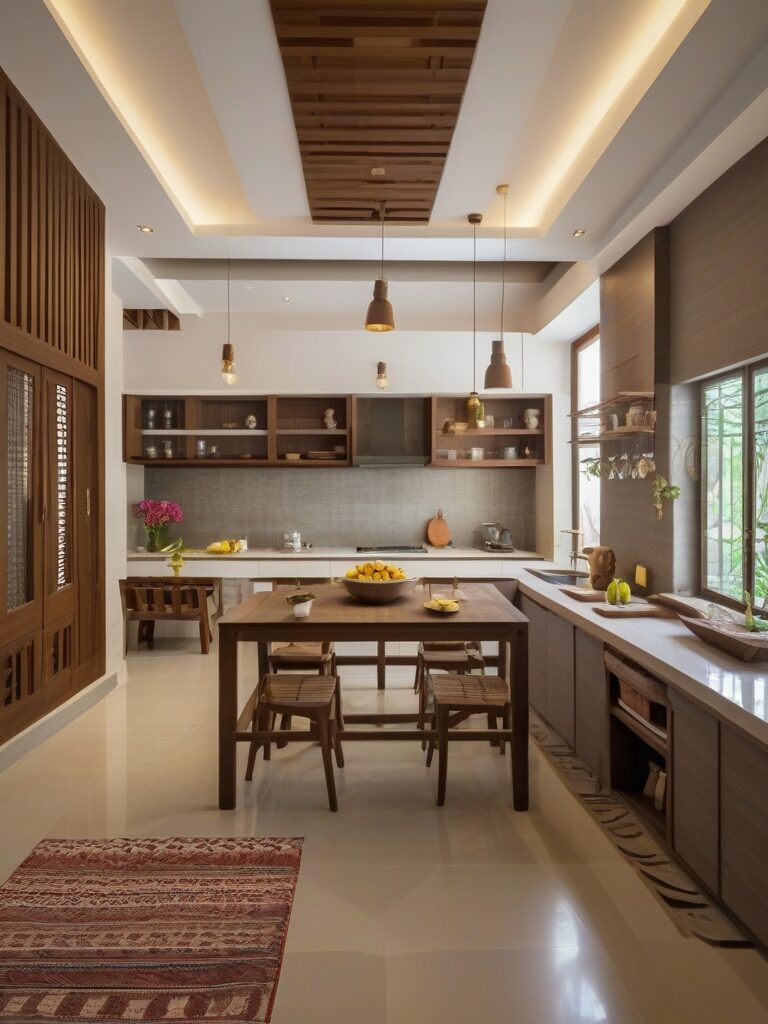
In recent years, the concept of open kitchens has gained widespread popularity in India, blending traditional design elements with modern functionality.
This transformation serves not only to maximize space but also to celebrate India’s rich cultural heritage.
For instance, incorporating locally crafted woodwork or intricate carvings can add a delightful layer of authenticity to the kitchen’s aesthetic while providing an inviting warmth.
Traditional jali work, which is characterized by ornamental lattice patterns, can serve as stylish dividers that subtly separate the cooking area from the dining space without sacrificing that coveted openness.
Regional influences play a pivotal role in shaping the visual identity of open concept kitchen designs across India. States like Rajasthan boast vibrant color palettes inspired by local architecture and textiles. A kitchen featuring bold turquoise cabinetry paired with warm terracotta tiles creates a ranch-style ambiance familiar to many Indian homes.
Similarly, states like Kerala incorporate lush greens and earth tones into kitchen designs reflecting their verdant landscapes and proximity to nature. Such integrations give homeowners opportunities to draw from their regional backgrounds while also creating spaces that feel distinctly personal.
To further enhance this modern yet culturally resonant design approach, using materials such as granite, marble, or even locally sourced clay for countertops can provide durability while echoing traditional craftsmanship.
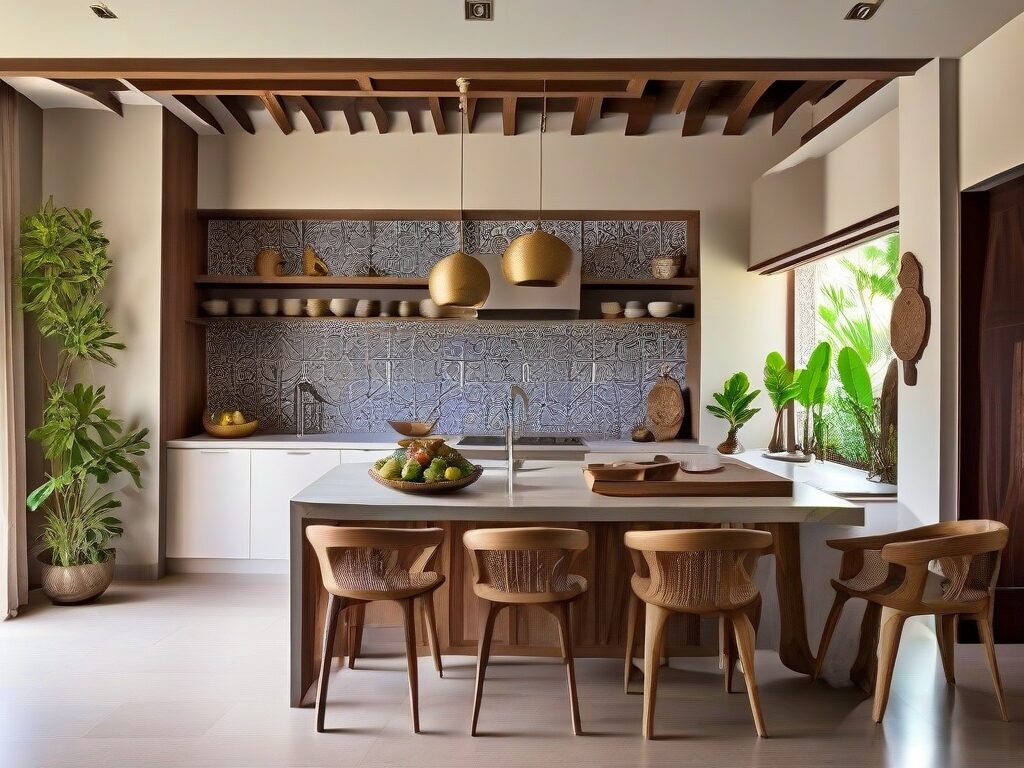
Additionally, opting for bright mosaics or patterned tiles on backsplashes offers striking visual interest and tells a story through color—a hallmark of Indian design sensibility. Elements such as brass utensils or handmade pottery can be cleverly showcased on open shelves to create functional storage solutions while adding an artistic flair reminiscent of market stalls found across the country.
Embracing these cultural inspirations allows homeowners in India to craft Open concept kitchen designs that are not just practical but deeply reflective of their heritage.
By marrying old-world charm with contemporary convenience, these kitchens become spaces where daily rituals can flourish amidst beauty—turning each meal preparation into an experience steeped in culture and tradition. As we redefine home spaces in our pursuit for efficiency and aesthetics, let us draw inspiration from rich histories that have long celebrated togetherness over shared meals.
Tips for Planning Your Open Concept Kitchen Renovation
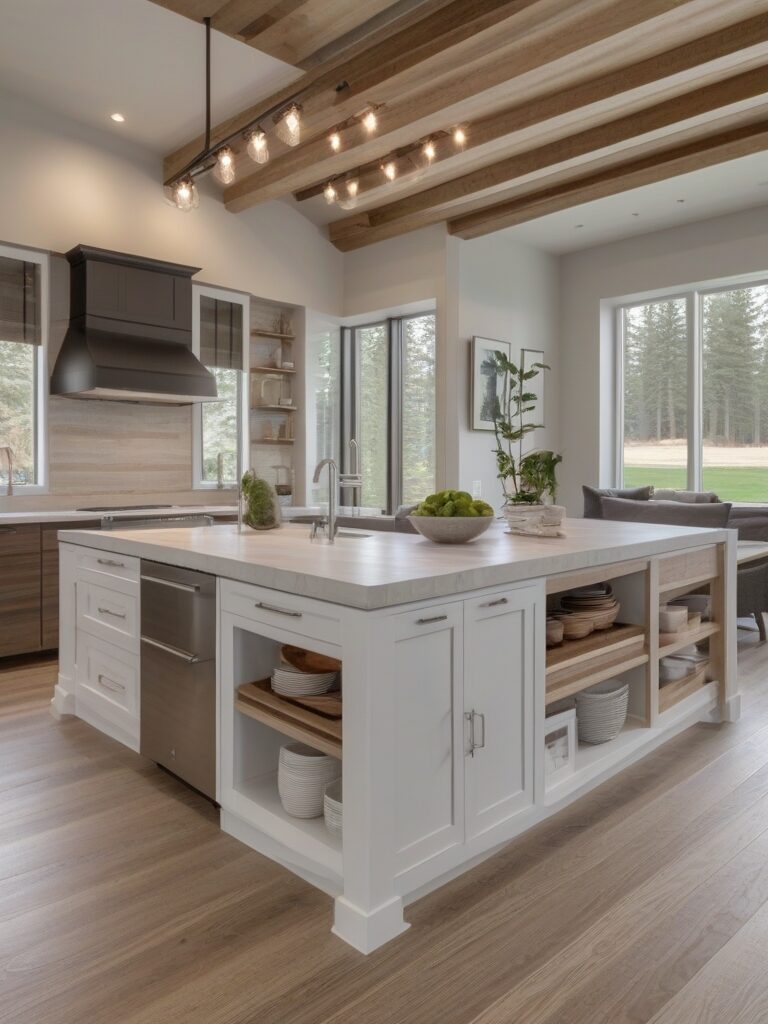
Before embarking on the journey of transforming your kitchen into an open concept space, it is crucial to assess your current layout thoroughly.
Start by evaluating how the existing design functions in relation to your daily activities. Identify any potential challenges, such as walls that may obstruct natural light or workflow paths that feel cramped.
For example, if your kitchen currently feels isolated from the dining area due to a dividing wall, consider this a prime opportunity to enhance flow and accessibility. Detailed measurements can help you visualize how a more open arrangement would affect everyday use.
Budgeting is another critical aspect of your renovation plan. It’s vital to identify what financial resources are available before diving headfirst into the design process.
Aspects like structural changes—removing load-bearing walls or moving plumbing fixtures—can significantly impact costs.
A realistic budget should also include allowances for finishes and appliances, which can vary widely in price depending on style and quality. Consider prioritizing essential features first; for example, investing in a high-quality island counter with durable materials may set the tone for your entire kitchen while remaining functional.
Collaborating with professionals cannot be overstated when creating an open concept kitchen. Engaging an experienced designer or architect will ensure that your vision aligns with practical building codes and aesthetic requirements.
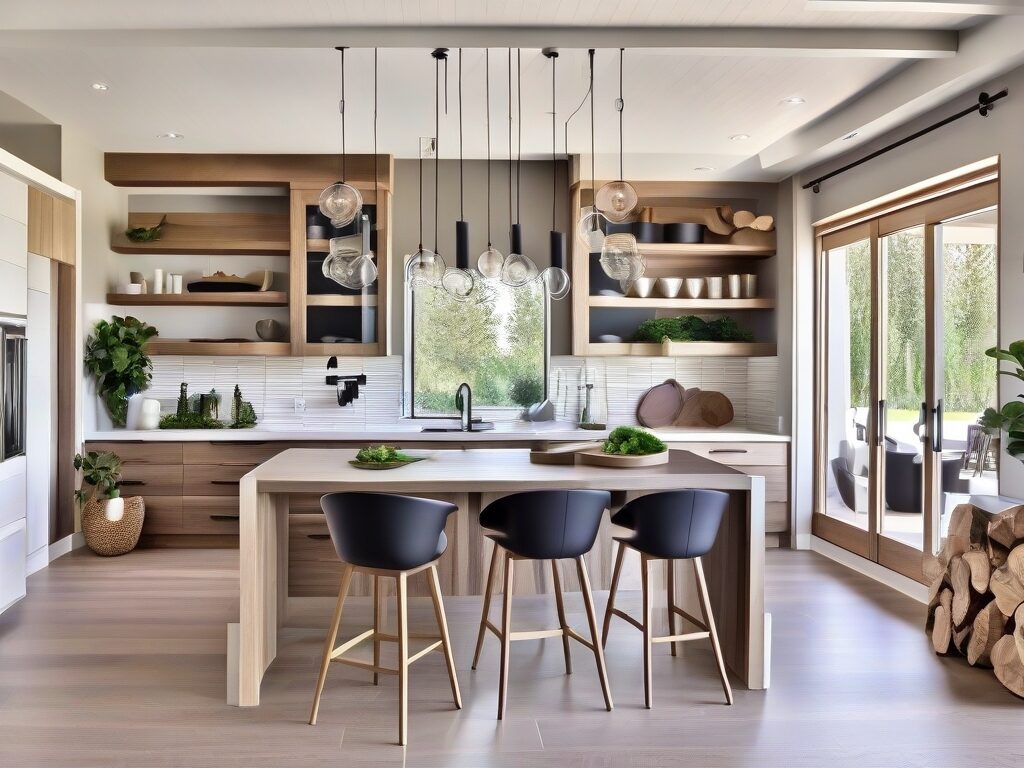
They’ll bring insights about optimizing sight lines and incorporating elements that maintain harmony between spaces—an essential factor in achieving the seamless flow characteristic of successful open concept kitchen designs. Additionally, involving contractors early in the planning phase will allow them to offer input regarding scheduling and labor costs based on their experience with similar projects.
By carefully assessing your layout, budgeting effectively, and collaborating with design professionals, you’ll pave the way for a stunning transformation that elevates both form and function within your home—a space that’s perfect for entertaining friends or enjoying quiet family meals together.
Embrace the Open Concept Revolution
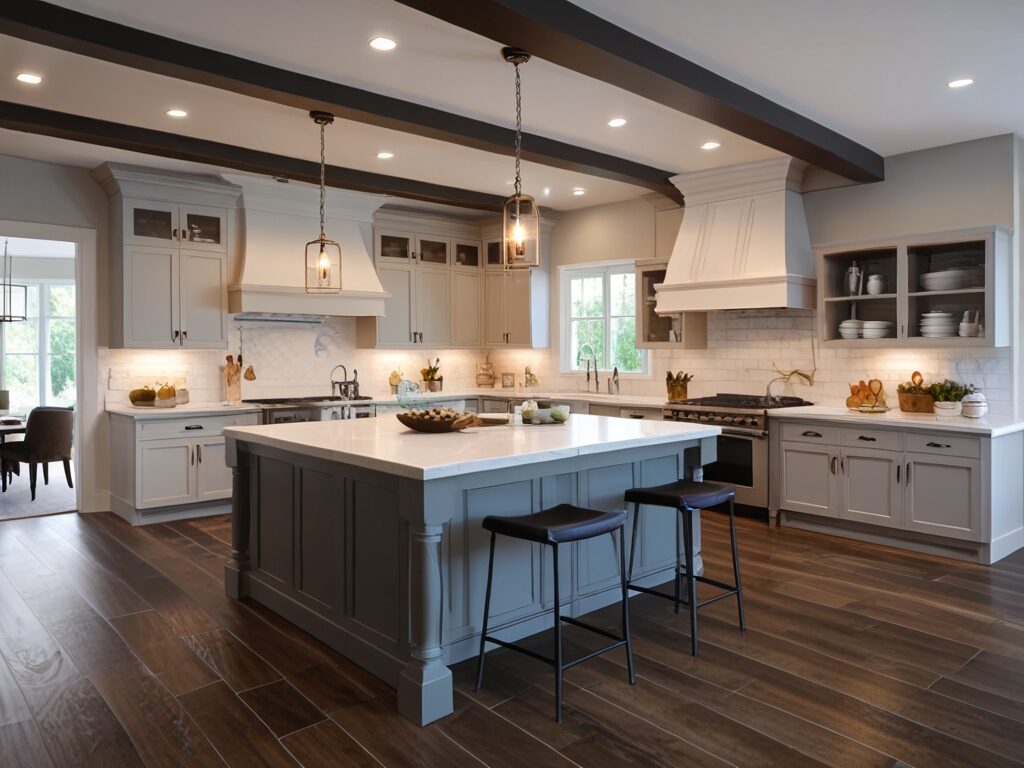
As we’ve explored throughout this article, open concept kitchen designs are not just a trend but a transformative approach that can redefine your living space. By prioritizing natural light, creating seamless flows between rooms, maximizing functionality, and incorporating bold design elements, you can craft a kitchen that is both aesthetically stunning and supremely practical.
Remember, the beauty of an Open concept kitchen designs lies in its versatility; whether you’re opting for vibrant colors inspired by cultural heritage or leaning into minimalist designs with smart storage solutions, there’s room for personal expression across all styles.
Now is the time to embrace creativity and redesign your kitchen to be more than just a space for cooking; let it become the heart of your home where family gathers for meals and moments together.
With thoughtful planning and consideration of your unique preferences, your next renovation can reflect not only contemporary trends but also your own story and lifestyle aspirations. So go ahead—dare to innovate as you embark on this exciting design journey!
Kitchen Appliances
FAQs for Open Concept Kitchen Designs
An open concept kitchen is a design layout that integrates the kitchen with adjacent living spaces, such as dining and living rooms, creating an expansive feel and promoting social interaction.
Advantages include improved flow between spaces, increased natural light, enhanced social interactions during cooking and entertaining, and a modern aesthetic that can make small areas appear larger.
Yes, open concept kitchens can be adapted to various home styles, but they work best in spacious layouts. Smaller homes might need careful planning to maintain functionality without feeling cramped.
Incorporate effective range hoods or exhaust fans, along with strategic placement of windows and doors to promote airflow. Consider adding plants or using materials that help absorb odors.
Popular choices include granite for durability, quartz for low maintenance, and butcher block for a warm aesthetic. Select materials that complement the overall design theme of your home.
Utilize vertical space with shelving units or cabinets up to the ceiling, consider multifunctional furniture like islands with built-in storage, and use creative dividers or cabinetry to conceal clutter.
Absolutely! You can integrate a dining table as part of the layout or opt for a breakfast bar attached to the kitchen island for casual meals while keeping the space cohesive.
Neutral tones paired with vibrant accents often work well; consider earthy colors blended with bold hues like deep red or royal blue to reflect Indian aesthetics while maintaining brightness and warmth.







